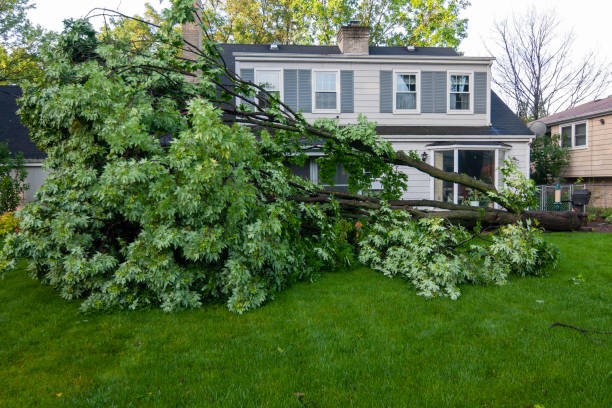Storms can be a powerful force of nature, capable of wreaking havoc on our homes and landscapes. Among the casualties, trees often bear the brunt of the damage, posing not only aesthetic concerns but also potential safety risks. Dealing with storm-damaged trees requires a systematic approach to protect your landscape and property.
Here are five essential steps to help you navigate the challenges of storm-damaged trees.
1. Safety First
When a storm leaves your trees damaged, the first and most crucial step is to prioritize safety. Assess the immediate area for any hazards, such as hanging branches or unstable trees. Keep a safe distance and avoid working under or near damaged trees.
If you are unsure about the stability of a tree, it is wise to hire 24/7 Emergency Tree Removal fairfield oh who can assess the situation and recommend the best course of action.
2. Evaluate The Damage
Before deciding on the fate of a storm-damaged tree, carefully evaluate the extent of the damage. Begin by identifying any broken branches, splits in the trunk, or exposed roots. Trees with significant structural damage may need to be removed to prevent them from becoming a safety hazard.
Hire professionals for tree trimming el cajon ca to carefully remove anything that might be harmful to the surroundings. However, minor damage can often be addressed through proper pruning and care, allowing the tree to recover.
3. Pruning And Cleanup
For trees with minor damage, pruning is a valuable technique to help them recover. Remove broken branches, jagged edges, and torn bark to encourage the tree to heal. Make clean cuts just outside the branch collar, as improper pruning can lead to further stress on the tree.
Cleanup is equally important; clear away debris to reduce the risk of pests and diseases infesting the damaged areas.
4. Support And Stabilize
In some cases, a damaged tree may require extra support to prevent further harm or to allow it to heal. Installing tree supports, such as braces or cables, can help stabilize the tree and reduce the risk of it falling.
This should only be done by a professional arborist who can assess the specific needs of the tree and ensure proper installation.
5. Monitor And Future Care
After addressing the immediate concerns, continue to monitor the damaged tree’s progress. Keep an eye on its overall health, growth, and recovery.
Adequate watering and fertilization can support the tree’s rehabilitation. Regular check-ups with an arborist can provide guidance on the tree’s future care and whether it can be fully restored or if removal is the best option.
Bottom Line
Dealing with storm-damaged trees is a task that requires careful consideration and expertise. Prioritizing safety, assessing the damage, proper pruning, support when necessary, and ongoing care are essential steps to protect your landscape and property. Remember that consulting with a professional arborist is often the best way to ensure the health and longevity of your trees after a storm, as they can provide expert guidance tailored to your specific situation. By taking these steps, you can help your trees recover and continue to thrive in your outdoor space.
